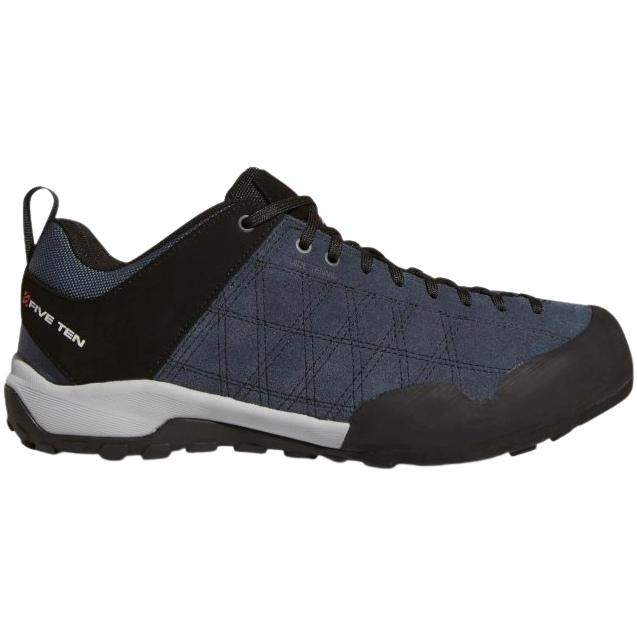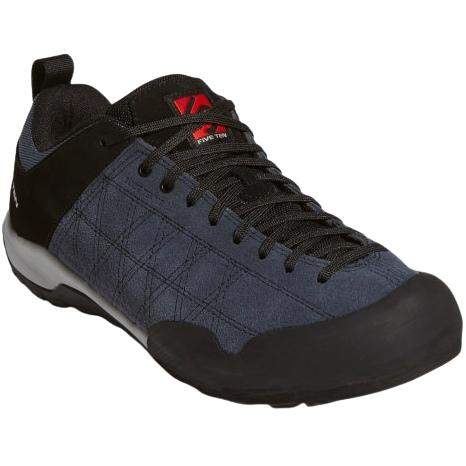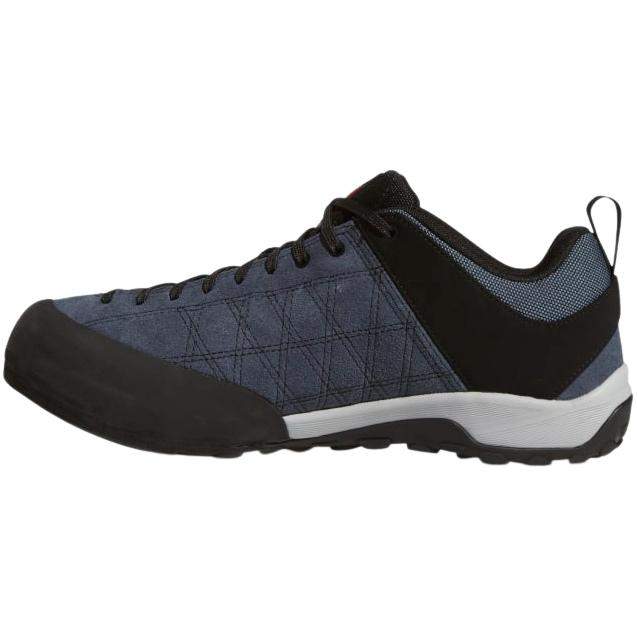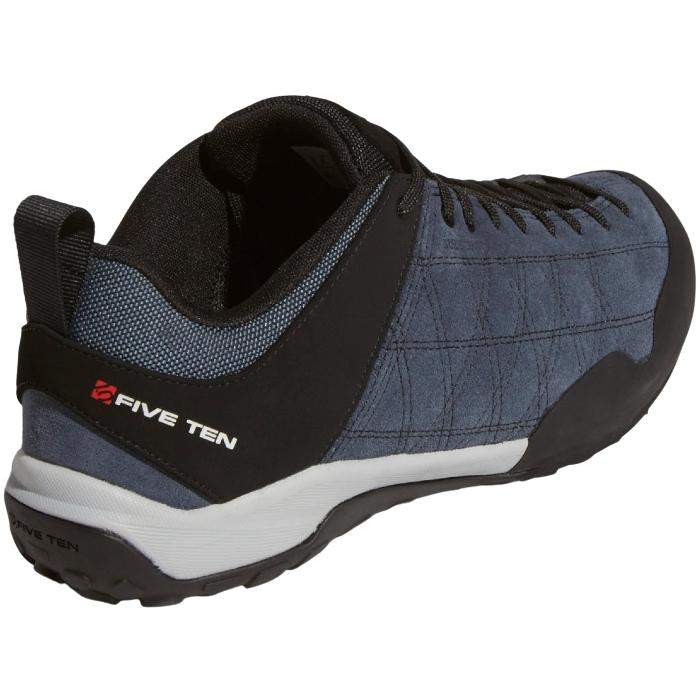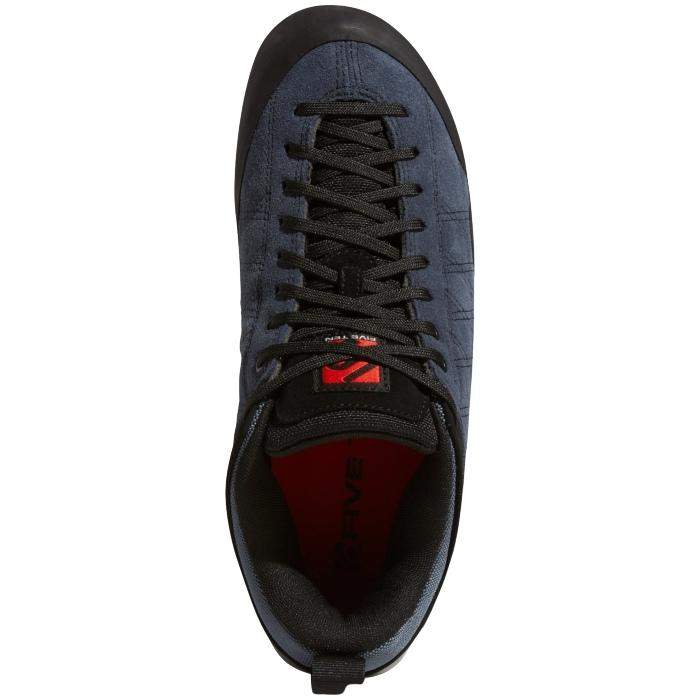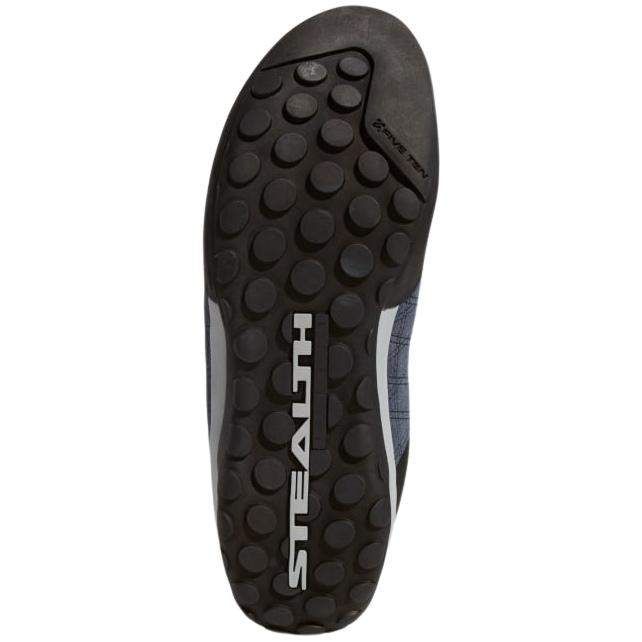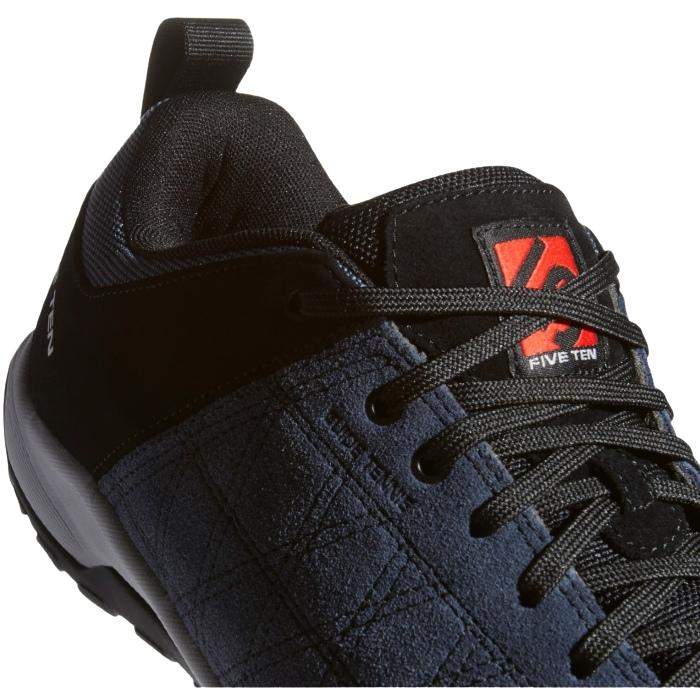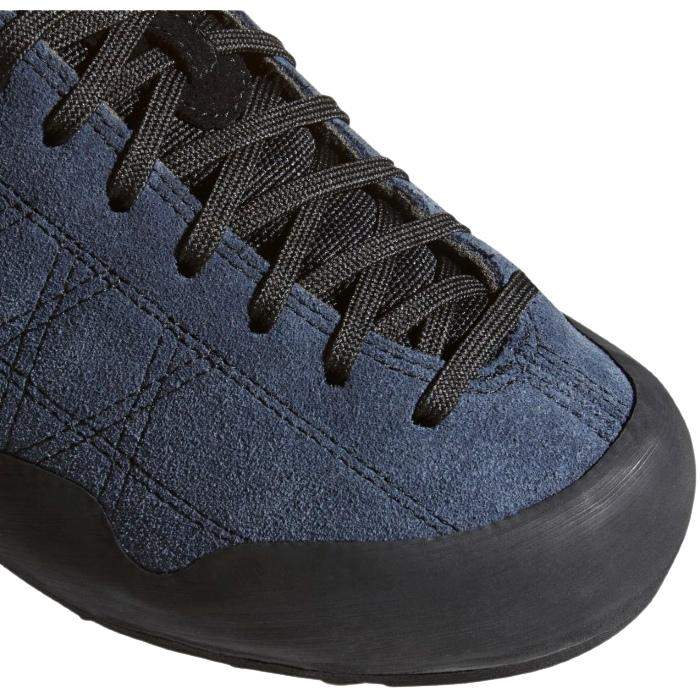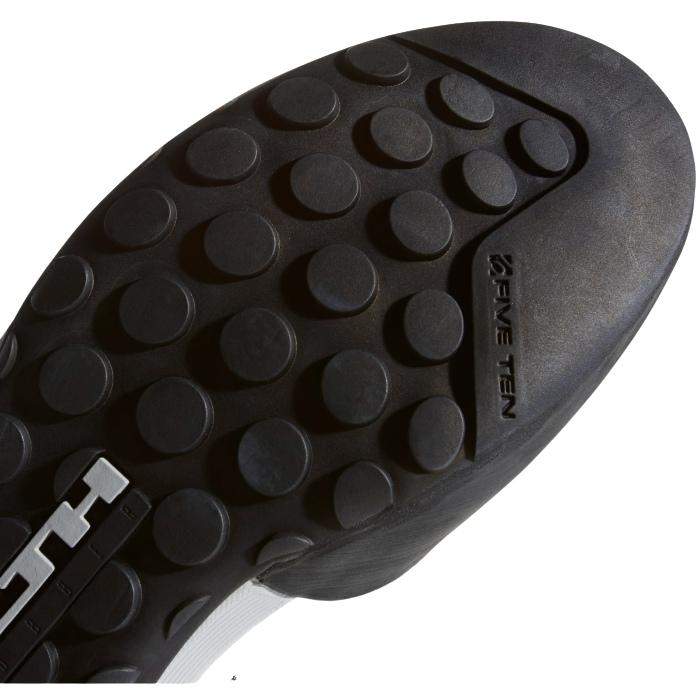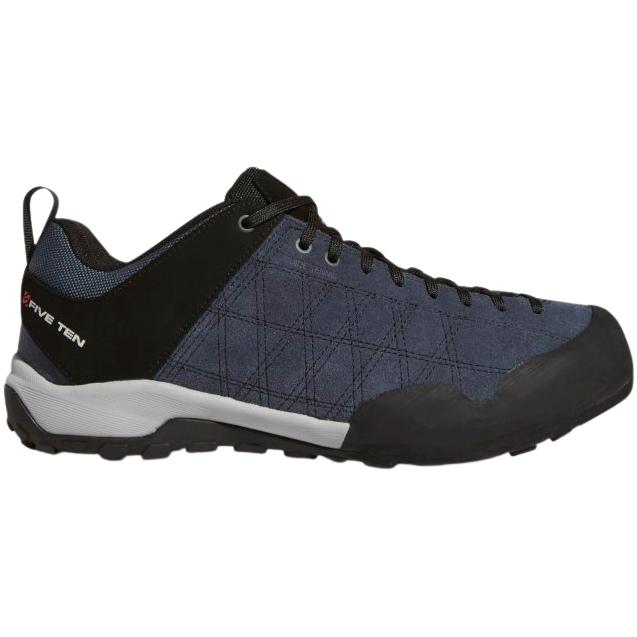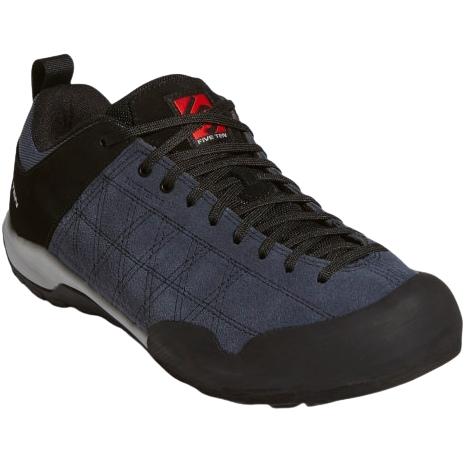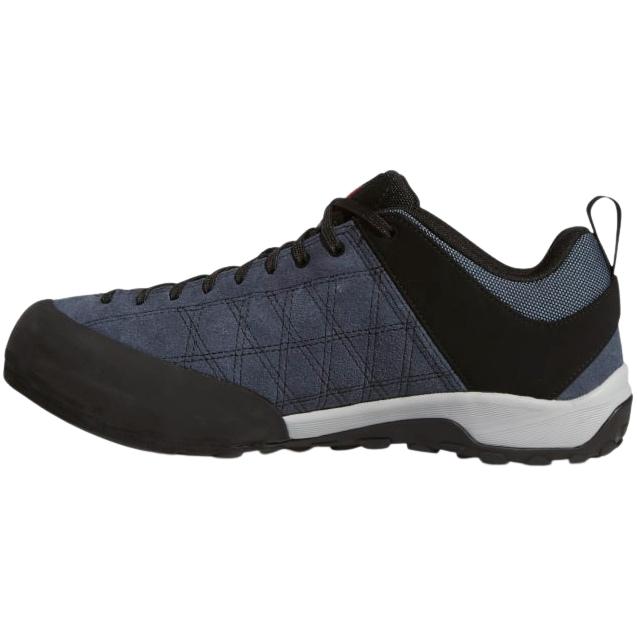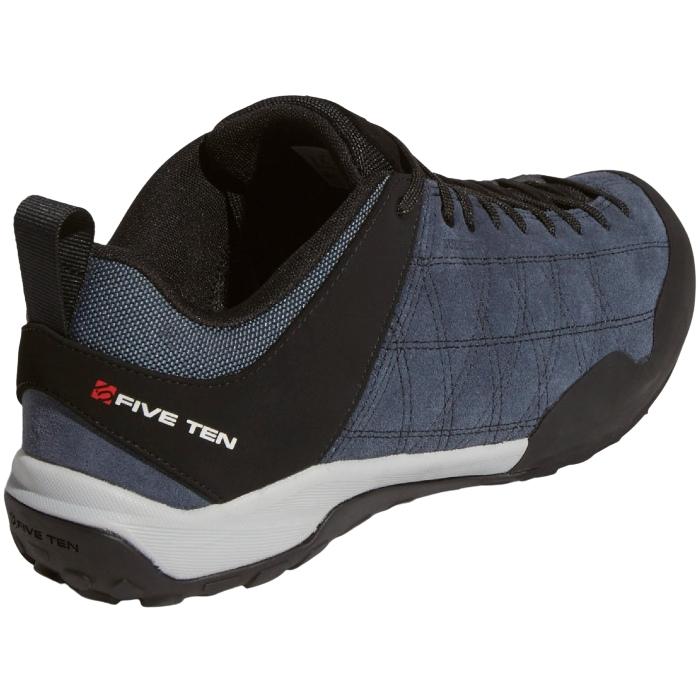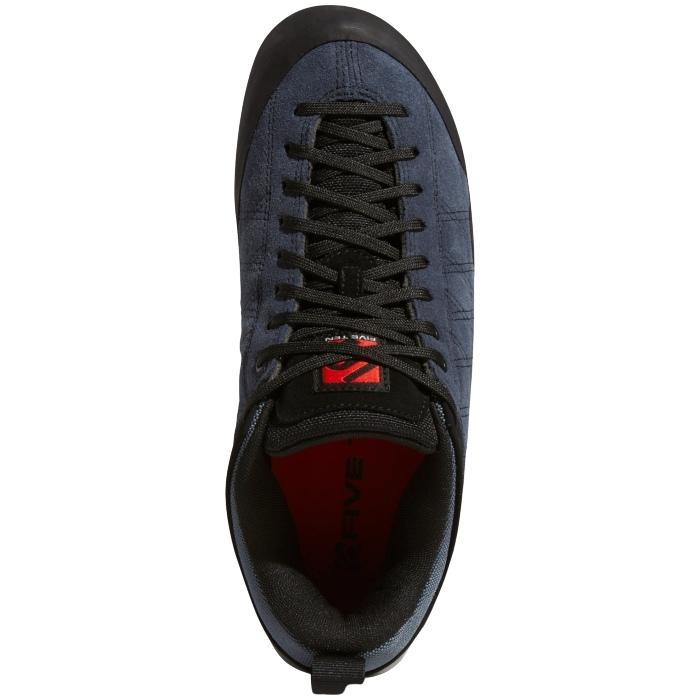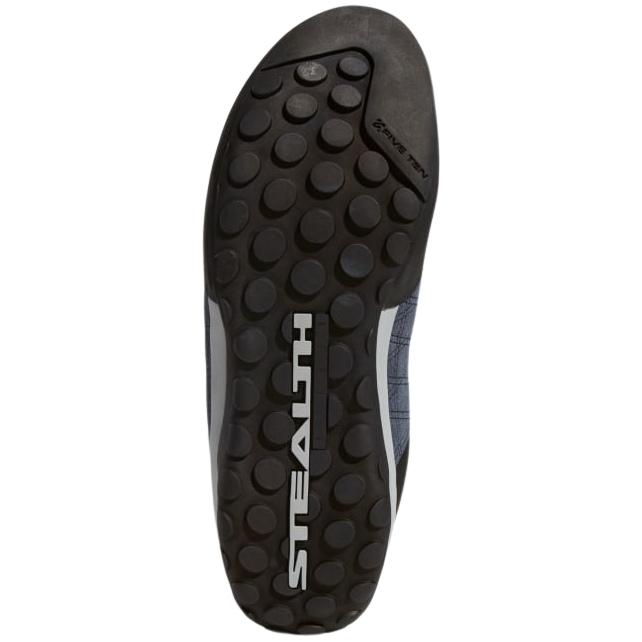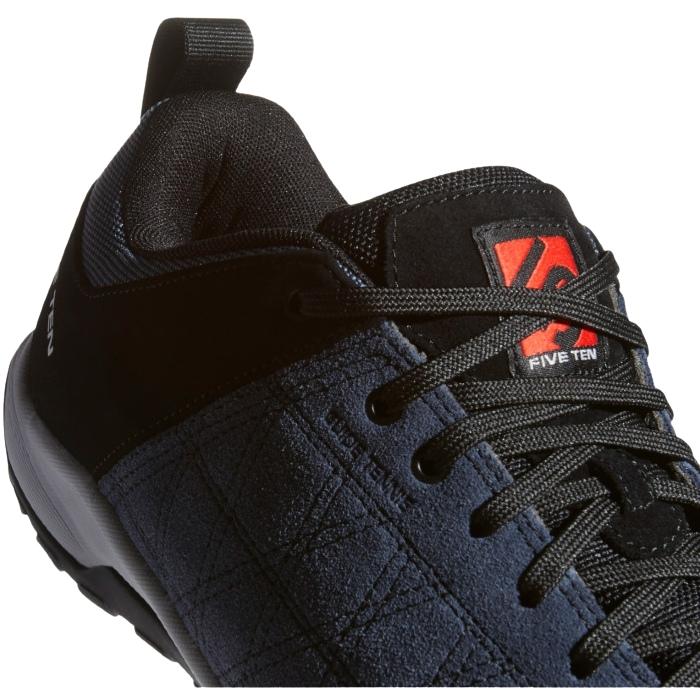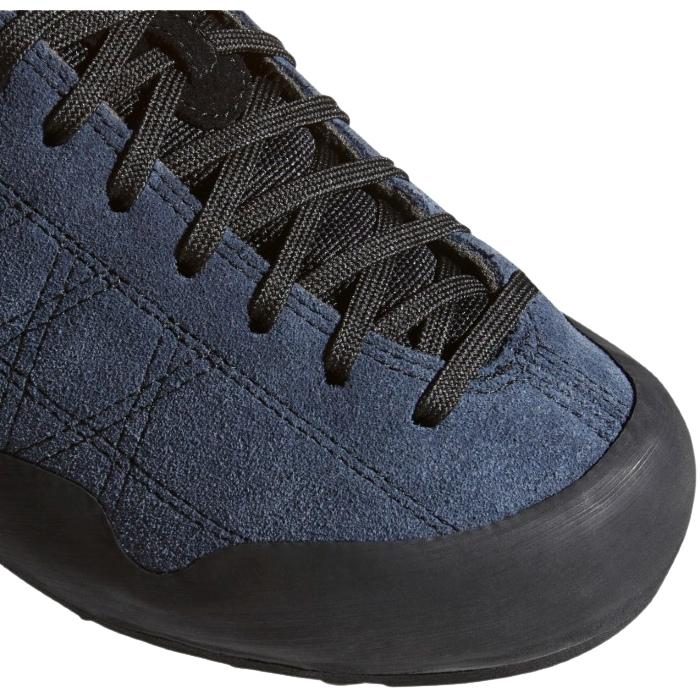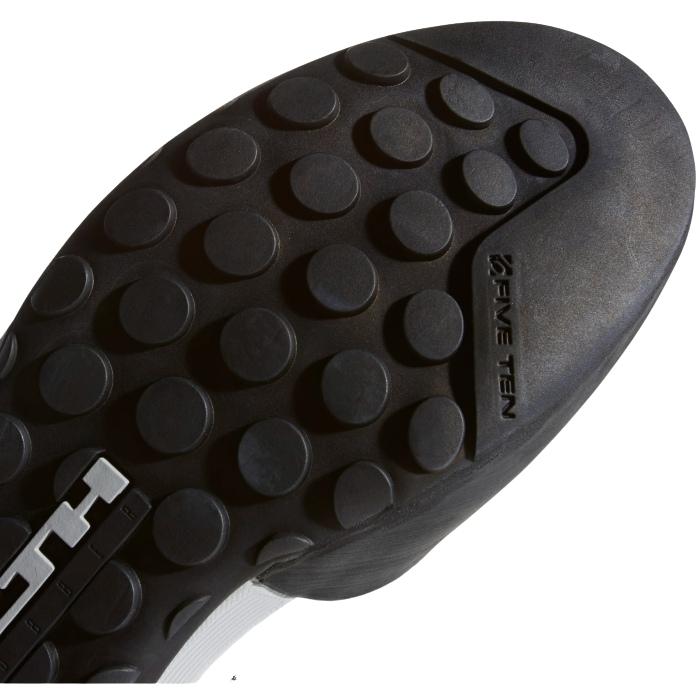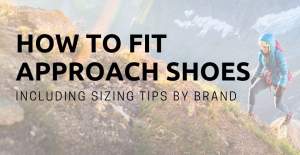
Guide Tennie
Description
Cling to rocks and slick climbing surfaces. These shoes feature a C4 Stealth® rubber that provides unbeatable traction when edging and powering off slender ledges. An outer climbing zone offers additional friction. The stiff midsole gives you stability and control on mixed terrain.
Retail price
This Product is Hard to Find.
We don’t know where you can buy this item online in the US. We’ll continue to check all the major retailers and will update this page as soon as we find one.
If you know where to find this online in the US, let us know, and we’ll add the link.

| Weight | Half Pair - size # Full Pair - size # |
Style  |
Technical |
Volume  |
High (men/unisex) |
Closure  |
Flat laces |
Rise  |
Low |
Features  |
Climbing Zone Low toe lacing |
| Sizing | UK: 5.5 - 12.5 (half sizes) |
| Materials & Construction | Upper: Split-suede leather upper with extended rands
Insole / Liner: Textile lining Sole: Stealth® C4 rubber |

No reviews yet.
The Guide Tennie is a great shoe for steep rocky approaches, technical scrambling or easy climbing. They're not so good on anything wet, such as steep grass or boggy terrain, so choose the days and walks on which you use them wisely. They are good in terms of all-day comfort, so big days out in the hills (assuming it's not raining) they handle well. My pair of size 7 comes in at just 752g, which is quite light for a supportive approach shoe. Given the overall quality, the price of around £100 is good value too.
During my first outing in the Guide Tennie, it didn’t take long for me to appreciate the stiff, compression-molded EVA midsole and it’s excellent underfoot protection. This shield allowed me to be less concerned about where I placed my foot while hiking, as pointy, irregular rocks no longer threatened the bottoms of my feet. A wide, cushy heal further adds to the shoe’s comfort and helped provide welcome stability while navigating uneven terrain with a pack on. In fact, the Guide Tennie is one of the most stable approach shoes I have worn.
The Five Ten Guide Tennie is the best approach shoe for climbing and scrambling that we tested. Small improvements over many generations have left us with a shoe that hikes well and is more durable than past versions. We're glad the shoe that started the approach shoe category is still going strong and a great option for wall climbers, alpine scramblers, and valley rats alike.


